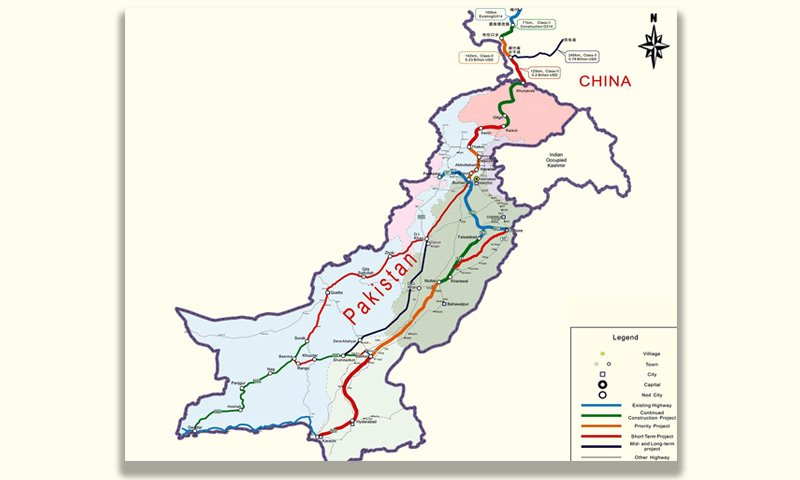BEIJING: With related major energy and infrastructure projects being in full swing, China-Pakistan Economic Corridor (CPEC) has become the center-point where transit trade routes converge linking Russia with Central Asia.
Pakistan has also provided a special security division to secure CPEC from all dangers, a Chinese official website ‘China.org.cn’ opined on Tuesday.
The Belt and Road (B&R) kicked off with the CPEC, the first of its six corridors and the linchpin of the B&R strategy, as it unlocks Central Asia, connects to Xinjiang, leads down to Gwadar port and then onwards to Africa, Iran and the Middle East.
All this economic activity has also brought about a major geopolitical realignment in the form of the China-Russia-Pakistan power troika, an equation which provides economic benefit while it addresses mutual security concerns.
It also consolidates the entire region vis-a-vis the new dimension of U.S.-India ties. The B&R initiative is a vital combination of geo-economics and geo-strategy.
The Belt and Road (B&R) is an innovative paradigm of global integration involving 65 countries, including one-third of the world’s GDP, impacting 65 percent of the world’s population and a quarter of all the goods and services, the website observed.
Chinese President Xi Jinping announced the Belt and Road Initiative in late 2013. It comprises the “Belt,” which is a network of roads across the world, and “the Road” which is actually a network of shipping lanes and ports.
The project has a geo-strategic component focused on advancing China’s economic goals and utilizing its industrial potential. It serves to remove China’s dependence on the Malacca Strait for oil imports, improves trade connectivity, furthers China’s foreign policy and minimizes conflicts as it reconnects the world.
This project of the century has kept the world economy afloat since 2013 by withstanding the crash of the trans-Atlantic banking systems.
As PricewaterhouseCoopers reports, the “real value” in China’s economy and its investments in countries along its Belt and Road initiative is shifting to infrastructure projects and rising at a rapid pace.
The B&R is to be financed mainly by the Silk Road Fund and the Asia Infrastructure Investment Bank. Additionally, the collapse of the Trans-Pacific Partnership provides Beijing with the perfect opportunity to re-integrate Asian investment that used to find its way to American banks.
Further prospects and direction of the B&R initiative will be determined at the “two sessions” as the project is an integral part of China’s new reforms and an intrinsic part of its foreign policy.
China is going to hold the Belt and Road forum this May and it would be a masterstroke by China if more countries like U.S. and India announce their participation or signal their approval with their presence at this forum; the great game is never really over and there is much more scope in Chinese wisdom and peaceful globalization in the Eurasian Century.





